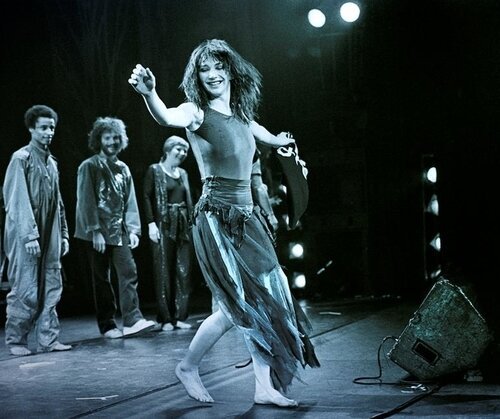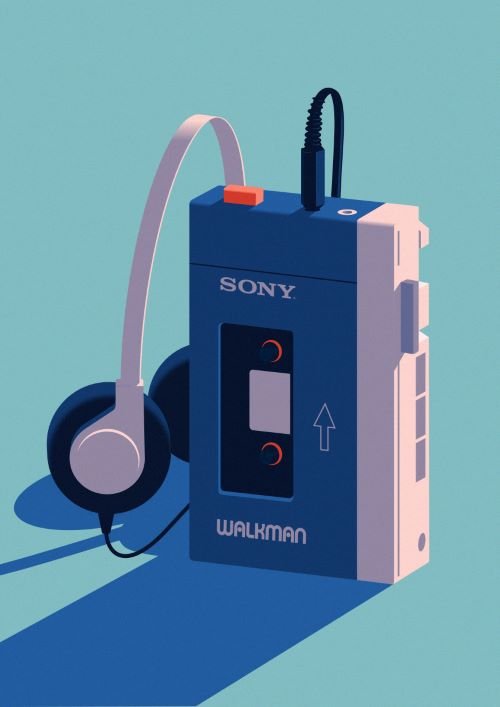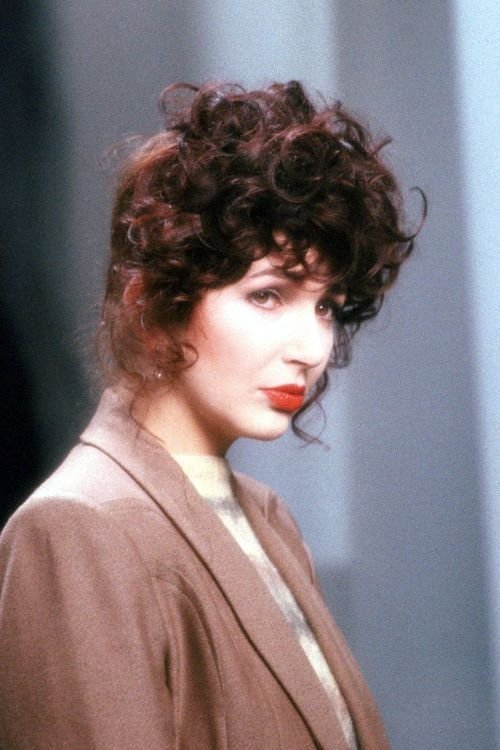FEATURE:
Heart Is a Drum
Beck’s Morning Phase at Ten
_________
ON 21st February…
we mark ten years of Beck’s Morning Phase. One of his most underrated albums, Morning Phase acts as a companion piece to 2002’s Sea Change. Almost every credited musician who was involved with Sea Change returned to record for Morning Phase (with the sole exception being Sea Change producer Nigel Godrich). I am going to end with some reviews for Morning Phase. Six years after Modern Guilt, Beck changed sonic tact. Modern Guilt is a fantastic album, though it is very different compared to Morning Phase. Producing alongside Dangermouse, it is a short album. One filled with paranoia and some drum loops and chunky guitars. It has a Hip-Hop feel in some respects. An album that has this special type of energy and anxiety. Morning Phase was a flip. Much more mellow and contemplative, it is a classic example of Beck being able to shift tone and sound between albums and creating something cohesive and natural. A top-five album here and in the U.S. – and other nations -, Morning Phase won the GRAMMY for Album of the Year. It also won for Best Rock Album and Best Engineered Album, Non-Classical. Acclaimed and hugely successful, I wanted to look back a decade at this incredible work. Prior to getting to some reviews for Morning Phase, there are a few interviews I want to bring in. The Guardian spoke with Beck in 2014 about one of the most important and stunning albums of his career:
“Beck's new album, Morning Phase, is his 12th studio album but only his first in six years. Inspired variously by 70s LA rock and Nashville country, it's a reunion with the band with which he made 2002's Sea Change. It's a slow, almost ethereal affair, a far remove from his more rambunctious records like Odelay or Midnite Vultures. It's also, in places at least, a melancholic album, one whose centrepiece – the eerie, reverberating Wave – climaxes in a howled one-word refrain of "Isolation".
If you were to try to pinpoint a reason for this dark mood, there's one obvious candidate. Before Christmas, Beck revealed to an Argentinian newspaper that he had in recent years suffered "severe damage" to his spine and that throughout his "long, long recovery" he had been unable to play music. He gave no more details than that and doesn't address the subject directly with me either. It seems fairly certain that for someone whose life has been built around musical performance, such an injury would leave a deep mark. But when it comes to Morning Phase, there is a sense that Beck is channelling more than just that experience; a broader, more universal disappointment.
"I was thinking about it the other day," he says, "this idea of… how everyone has a different experience in life. Some just blow through things and keep on an even keel, others have these ups and downs, but almost everybody goes through a point that could lead to a bitterness or a cynicism. It's not what you set out for, hopefully things go well… but there's a point where some people don't believe in anything. I had run-ins with older musicians when I was starting out who were very bitter. At the time my attitude was like, 'Wow, I get to put out a record, this is the greatest thing ever!' But then, as time goes on, you realise what they're talking about. Some brutal shit. Some people don't make it, some artists get destroyed by it, you can really do your head in.
"There's a reason why I made these songs and this record. It felt very personal and direct and uninhibited. At the same time I'd hate to say it sums up some kind of mood or something because I'm now working on another record that's the opposite of this. I was trying to express things in a way that… like a lot of songwriters… in a way that might speak to or resonate with somebody else. Can you make [things] good again even when it's all been ruined and you need to start over? Can you find that again? I think that's what I was trying to reach for on this record."
Reaching seems an appropriate word, in the sense that things still stay outside the listener's grasp. As an artist, Beck has always veered towards ambiguity – not just in blending musical genres but in his lyrics, which rarely offer up direct meaning (and sometimes offer the direct opposite). A typical pattern can be observed in Blue Moon, a song on Morning Phase where the opening line sets out a theme – "I'm so tired of being alone" – but refuses to elaborate on it, in favour of veering into enigmatic imagery: "See that turncoat on his knees/ Vagabond that no one sees".
"It makes it more interesting if there's a little bit of the elliptical happening," Beck says of that particular habit. "Hopefully some of it translates. Perhaps it won't literally translate from the lyrics but somehow from the feel of the music. Even in the music, it's iffy you know, but it's a good attempt."
Morning Phase came together over a lengthy period and in uncertain fashion. Wave was the first song to be recorded – at Capitol Studios in 2009. Three other songs were salvaged from an abandoned project that had taken place in a flash in Nashville in 2010. His reunion with the five-piece Sea Change band came just last year but was similarly brief, totalling just two days. ("Getting all those individuals in the same room is like the aligning of nine planets," Beck says.)
Those final sessions form the core of the record and were characterised by a particular technique. "Everything is exceedingly slow," says Beck. "Almost impossible-to-play slow, you know? When a lot of the songs were being tracked we were always 'Slower, let's get slower'. Because the slower it gets, the harder it is to play. They get harder to sing. But suddenly these songs that could be just simple singer-songwriter songs, everything elongates and they become something else. It just has a spell to it, this suspended feeling, and I wanted a lot of the sounds to feel familiar, but also to have something a little bit haunting and strange about them. I don't know why I just thought it might make it a little more interesting."
During his convalescence Beck had been developing his skills as a producer, working on projects with Charlotte Gainsbourg and Stephen Malkmus (a little randomly, he also chipped in on the Scott Pilgrim Vs The World soundtrack). He did all the production on Morning Phase himself, but unlike the lightning bursts of recording, it was something he laboured over for months. "I was replacing things, rewriting," he says of the process. "I have some records like that, where you write the thing about 30 times until you get something that you feel is OK; it isn't just trite or something you've heard before. This record was supposed to come out in October so I was working all spring, no sleep. Working 10 weeks, seven days a week, no breaks, working till three in the morning every day just trying to get the record done by July so it could come out in October. We got the record done and then it ended up coming out later. I wish I had known, I would have slept more."
The result is an album that strikes a tender balance between angst and hope, between something beautiful and something just a little discomfiting. Another outcome, though, is that Beck appears to have rediscovered his enthusiasm for making and listening to music. This at a time when the crushing together of genres that he pioneered has become increasingly the norm.
"That's gratifying for me," he says, "because I feel like I had a lot of bottles thrown at me over the years for attempting to do that." He talks up the work of Diplo and Kanye, but also Dirty Projectors and Ariel Pink ("LA art-pop-punk performance weirdo music that is, to me, just something that I grew up around")”.
I am not sure whether there are any plans for the tenth anniversary of Morning Phase. I have not heard of any reissues or anything special taking place. It is a shame, as Morning Phase is a tremendous album that warrants celebration and fuss. One that I would urge people to check out. I am going to bring in some sections of a Billboard interview. One of the most standout sections of the interview is where Beck says he doesn’t trust his instincts anymore:
“Morning Phase” started with a shared revelation of sorts, onstage, in May 2012. Beck and “Sea Change”‘s four-man backing band – bassist Justin Meldal-Johnsen, guitarist Smokey Hormel, keyboard player Roger Joseph Manning Jr. and drummer Joey Waronker – had reunited to play a last-minute gig at the relatively intimate El Rey Theatre in Los Angeles. It was a warm-up for a few bigger shows to follow, and it was a hot ticket: Beck hadn’t played his hometown since shortly after his 2008 album, “Modern Guilt.” And, though that stellar supporting band had been with him for a few albums in a row when they made “Sea Change,” they hadn’t all played together since. “In the interim, a lot of life has happened,” says Beck. “It had a huge impact on all of us, to revisit those songs. I think we were all feeling them in a different, maybe deeper way.”
Meldal-Johnsen later says: “It was pretty intense. I knew it would be like that. Something about the music we created together being the only thing that’s permanent during that duration of time is a heavy concept, but it was also joyous and rambunctious at the same time.”
“Morning Phase,” Beck’s 12th studio album, evolved naturally from there, picking up where “Sea Change” left off: the aftermath of the aftermath, the morning phase. Although he’d already started piecing together another new album with a series of high-profile collaborators, including Pharrell Williams – possibly due out later this year, “time willing” – Beck set those tracks aside to focus on “Morning Phase,” recorded at studios in Nashville, London, Los Angeles and New York over the course of several months in 2013. “I had some old songs, and I found the ones that fit together the best, and then I worked on building it, stripping it back, rewriting it and just kept going until I felt like it was getting better and better.”
Meldal-Johnsen says Beck and the band never explicitly discussed what type of sound they were going for, but it was inevitable: “It’s the same room with the same guys, with the same microphones and a lot of the same equipment and the same engineer. We don’t even talk when we start these songs; we just listen and respond. These are the tones and sounds and approaches that come forth from that recipe and these five guys. I think Beck responds to music in that trusting way, where he lets things unfold without judgment.” As Beck puts it: “Something just happens when you’re making a record, where certain things start to come out. It’s just something in the air. I might have been shooting for Royal Trux, and it came out Lynyrd Skynyrd, but it’s working, so…” He trails off.
I suggest that he obviously has confidence in his own instincts, but Beck quickly demurs, “My instinct has definitely gone awry; I could give you many examples.” He laughs and tells me about how, several years ago, he turned down repeated requests to write the theme song for a new cable TV series. “It’s about ad executives in the ’60s? They’re going to make a show about that? Really? Um, I don’t think so,” he remembers saying. “Yeah, just like the best show ever made!”
“I wish I had more confidence,” he adds. “I think that’s probably my Achilles’ heel. If I had more, I probably would have felt emboldened to make more interesting music earlier on, or really go for it in an artistic or songwriting sense. I’ve seen that kind of confidence serve other people really well. I really admire it. Like, I hope my kids have some of that kind of confidence that enables you to take risks”.
I will come to some reviews soon. Before that, The Quietus’ interview is worth highlighting. It is interesting how Beck’s colour and sonic palette changed between albums. After an album like 2008’s Modern Guilt, few were expecting an album like Morning Phase in 2014:
“At what point did it became apparent that this was a companion piece to Sea Change?
BH: I really wasn't telling myself that. It was more about doing a kind of record with songs based on acoustic guitar, piano... quieter, slower, as opposed to Modern Guilt, which was a collaboration with Danger Mouse, and the previous album [The Information] which had all these breakbeats that we'd created - we cut all the tracks live, and then remixed the whole thing, y'know? Those are completely different projects, there's a different orientation to those records. I feel like because there are different kinds of records that I make, that Morning Phase ends up being a bookend by default, because there's another five albums in between that are in a similar vein [to each other]. If I were allowed to make more records, I think, creatively, I would have more records like Morning Phase.
You lost a potential follow-up to Sea Change, didn't you?
BH: Yeah. I had a bunch of songs that I'd written over a two-year period after the Sea Change songs, which I felt were gonna be the next record in that vein. Then when I was on tour, the tapes were in a suitcase that was left behind at a venue. When we went to look for them, they had been taken. I think that partially had something to do with not making another record in the vein of Sea Change, because that was really heartbreaking to me. I was really proud of those songs, and I felt like they were building on the shoulders of Sea Change. I thought the songs were a lot better. It was a real step up. Unfortunately I hadn't memorised most of those songs. I'd recorded them on tapes as a reference, and I had them on tour with me so that I could work on them. But they were gone. It was sort of a shock that you could have a whole body of work and then the next day, completely gone. So I think for several years I was just a little bit frustrated and didn't want to have anything to do with writing a song on an acoustic guitar. [laughs] I ended up making another record with the Dust Brothers [Guero] because we had a lot of unfinished material. Then I did another record with Nigel [The Information] where we did the opposite of Sea Change. He wanted to do a kind of beat-driven hip hop record.
Godrich has since started the electronically-orientated Ultraista (with frequent Beck collaborator Joey Waronker) but The Information must have been quite a departure for him at the time?
BH: I think that was a real laboratory, and a bit of school, those sessions. Because I had been working with songs that had beats and that sort of production for years, but doing it with him, y'know, we were starting from scratch. There were no samples or programming, it was just all live. So I think for him, it was like beat school. It was kind of an experiment. It felt like we were sixteen year olds let loose, it had that kind of energy to it. A lot of discovery. It's a little rough around the edges, which was how we approached it, wanting to make it not so polished. Something you would make when you're just still trying to figure it all out. Because as time goes on, you learn how to do certain things properly, and I think with the nature of the songs we were trying to do, the production needed to be a little bit raw for it have that kind of energy.
In contrast to The Information, Morning Phase is an exceedingly lush and 'produced' album. Do you think this quality, along with the recurrent images of sun and sea, derives from a uniquely Californian outlook?
BH: I'm so bad at that. I'm not sure what a Californian outlook is. Because I grew up in California, but in East LA. I never saw the sea. All we saw was smog and urban blight! The palm trees had rats the size of cats, the public transportation - it could take two to three hours to get from one side of the town to the other. I only partially relate to that view of California. But y'know, I spent a number of years living in the country and in the mountains, in the elements, so I think some of that came through in the songs on this record. Maybe some of the other material that I've worked on over the last five years, but particularly this record.
Do you miss the time when fewer people were paying attention? When you wouldn't get instant feedback via the internet?
BH: I think most musicians in the last ten or fifteen years have been making a massive adjustment to that. This kind of seemingly consensus opinion that you get through the internet, through blogs, and comments and feedback from social media, all these things present musicians, filmmakers, any creative person with this kind of instant feedback that is intense, a little bit intimidating. Sometimes I think it can warp your sense of what you're doing. And I think that it has warped people's perspectives. It's messed with mine a bit and with other musicians I know. I've talked with friends of mine, they've had this discussion with a lot of other musicians, there have been these sort of growing pains to becoming accustomed to that kind of feedback. And possibly a period of time where there's been some self-consciousness. For myself, I feel like I've come out of [that] for the most part, because I'm used to it, but I would say that it was a little bit… it has taken some adjustment, and maybe I think differently about things I'm doing, question things in a way that I never would have in the 90s, when I was starting out”.
I am going to wrap things up with a couple of positive reviews. NME were among those to provide their spin on an amazing album. From an artist many might assume to be nothing but craziness and oddity, there is something deeper, more grounded and personal working through Morning Phase. I have been revisiting the album a bit ahead of the tenth anniversary. It still elicits emotions and response after every visit:
“At some point in the six years that have elapsed since the release of Beck’s 2008 album ‘Modern Guilt’, the inveterate musical shape-shifter has finally relaxed into a stereotype. The Los Angeles native has long flirted with the idea of the hippyish singer-songwriter, the long-haired troubadour penning harmony-laden folk-rock tunes from his house in Laurel Canyon. On this, his 12th album, he finally succumbs wholly to that soaring, swooning late ’60s and early ’70s sound, as typified by The Byrds, The Mamas & The Papas and Neil Young. But Beck being Beck, he adds an idiosyncratic twist in the shape of a majestic bleakness that hangs over the album’s portentous 13 tracks like a funeral veil. That’s not to say there aren’t optimistic moments, but if you feel like locking yourself in a dark room and sobbing at any point during your listening experience, well, no-one would blame you.
Touted as his ‘acoustic’ album, ‘Morning Phase’ is rather more symphonic than such a reductive description would have you believe. After the sweet orchestral swell of the 39-second opener ‘Cycle’, we drift into the lush ‘Morning’. With simple strumming laid over delicate drums that roll like Pacific waves, it’s a breezy, slow-paced nod to the oceanic swells of Beach Boy Dennis Wilson’s all too brief solo career. Here the sadness comes as subtle shoreside melancholy, with Beck plaintively cooing, “This morning/I let down all my defences”.
With his emotions on the line, in comes the softly psychedelic ‘Heart Is A Drum’, its shimmering instrumentation and heartworn harmonies straight from the lungs of Crosby, Stills & Nash. Twanging California guitars and a Gram Parsons lilt briefly lift the mood for ‘Say Goodbye’ and ‘Country Down’. Lead single ‘Blue Moon’ could be one of the most captivating things Beck has ever composed – a woozy bluegrass lament, spiralling around desperate calls of “Don’t leave me on my own”. The glumness is almost transcendental by the time we reach the orchestral misery of ‘Wave’, his echo-chamber vocals now intoning the word “isolation” over and over.
This isn’t LA in the blazing sunshine, as seen from a classic car cruising through Beverly Hills. This is the seedier fringes of the city just around twilight; Bukowski-like tales that feel warm with the afterglow of a party, but with a hangover on the way. It couples a moody sort of glamour with a concrete feeling of loneliness, and it makes for some of the most affecting comedown folk you’re likely to hear all year”.
I will end with Rolling Stone and their review of the majestic and stirring Morning Phase. Even though Beck has not really released an album like this since, I do feel we will get a Morning Phase/Sea Change-like album soon enough:
“ON HIS REMARKABLE 2002 album, Sea Change, Beck ditched his signature irony, break beats and jump cuts to vibe on the country-tinged singer-songwriter tradition of his L.A. hometown. Since then, the album’s stature has only grown – even as Beck left his fringed-suede jacket tucked away in a closet. He has finally put it back on for Morning Phase, which features many of the same players and themes as Sea Change. The result is a set that feels like an instant folk-rock classic.
The paired openers here, “Cycle” and “Morning,” set the tone. The first is a daybreak-conjuring string overture, conducted by Beck’s father, David Campbell, which introduces the LP’s musical themes. The second is a great early-hours song in the tradition of the Velvet Underground‘s kindred album opener “Sunday Morning.” Around bright acoustic guitar and chiming percussion, ripples of reverb and synthesizers blur Beck’s layered vocals and Stanley Clarke’s acoustic bass into a gorgeous watercolor-hangover haze. It echoes a lot of what Beck’s been up to lately – the lean formalism of his sheet-music Song Reader, the psychedelia of 2008’s Modern Guilt, the crate-digging of his online Record Club covers project, and the orchestral experiments of Rework, his Philip Glass collaboration.
At its core, Morning Phase is a record about what to do when the world seems totally fucked. Irony doesn’t cut it anymore; truth, beauty and resolve are the best weapons. “Looked up this morning/Saw the roses full of thorns/Mountains are falling,” Beck croons with falsetto swoops on “Morning,” then asks, “Can we start it all over again?” He could be referring to a crashed relationship, or a trashed ecosystem. On “Heart Is a Drum,” which radiates the cocooned warmth of Nick Drake‘s Bryter Layter, he asks, “Why does it hurt this way?/To come so far to find they’ve closed the gates.” Coming in the wake of a back injury so severe Beck couldn’t pick up a guitar for a number of years, Morning Phase‘s struggle toward the light feels as personal as it does universal.
Beck remains a master of pastiche, and trainspotters can have a field day mapping reference points: “Blue Moon” shares a name with the Rodgers-Hart and Alex Chilton songs, but more closely resembles Bob Seger’s “Mainstreet” getting abstracted by Brian Eno in a Laurel Canyon time share. The strings from “Cycle” resurface in “Wave,” a lovely voice-and-orchestra meditation that could almost be a Björk cover. On “Country Down,” reminiscent of Harvest-era Neil Young, he sings about a man in a lifeboat while Greg Leisz’s pedal steel draws chem trails across the sky.
The album ends with another aching morning song, “Waking Light.” But the line that persists comes a few tracks earlier, on “Don’t Let It Go.” “In the crossfire, there’s a story,” Beck offers, “how it ends, we do not know.” With lyrical nods to Bob Dylan‘s “I’ll Keep It With Mine” and the crossfi rehurricane birth in the Stones‘ “Jumpin’ Jack Flash,” the song is in effect about how musical storytelling helps us push through terrible times. Morning Phase aspires to no less”.
On 21st February, Beck’s Morning Phase turns ten. One of the best albums of his career, everyone needs to hear it. I know that there will be celebration on the day. Hopefully, songs from the album will be played on some radio stations. After a decade, Morning Phase still holds such power and emotion. Go and take some time out and listen to this…
WORK of brilliance.







































































